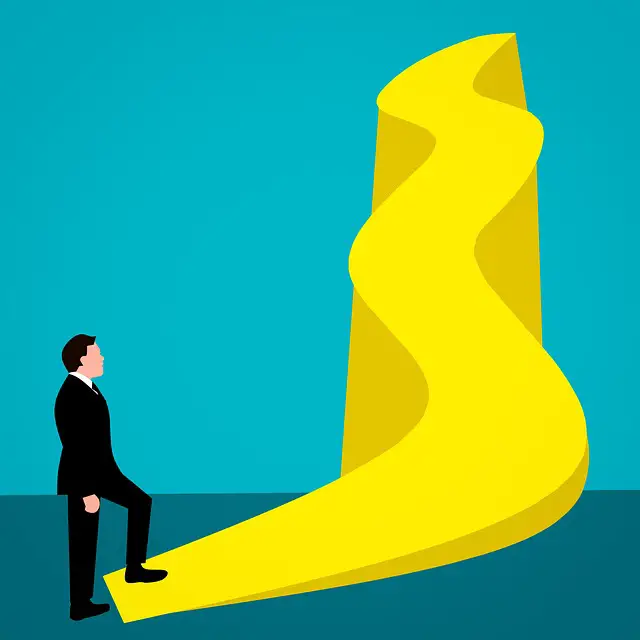Certificates of deposit is a type of savings account that earns higher interest rates than other savings accounts. This approach can help you grow your savings as long as you are willing to go for long periods of time without accessing the savings.
It’s a long-term strategy, which can be very rewarding because apart from offering high-interest rates, it also offers security and liquidity.
What is the CD ladder strategy?
For starters, CD stands for Certificates of Deposit. It is a type of savings account with a fixed interest rate and maturity date.
CDs offer high-interest rates, but to enjoy these rates, you’ll need to keep your money in the account for a good length of time. If you get a short-term CD, let’s say one year, you will earn less interest as compared to one that is for five years.
Since the goal is to earn high-interest rates, you cannot withdraw your money before the maturity date. But if you apply the CD ladder strategy, you can access high rates without losing access to your money.
The CD ladder strategy involves using multiple CDs with different maturity dates. This way, you can earn high-interest rates and still be able to gain access to your money.
How to build a CD ladder
To better explain how to build a CD ladder, let’s use an example:
Let’s say you want to invest $6,000 in a CD ladder. Instead of investing the entire $6,000 in a single CD account, you split up your money such that you have three or more separate investments. Each CD investment has a different maturity date and interest rate.
If you put your money into 4 investments. Let’s say you get a one-year, two-year, three-year, and four-year CDs. This means at the end of year one, your CD will have matured and you can withdraw your funds. The following year, the two-year CD will have matured and would have earned higher interest what you earned with the one-year CD.
By the time the four-year CD matures, you’ll have earned more interest than if you had locked your money into a single CD.
Although most people prefer one-year CDs, you have the option of getting one that is less than one year.
With that said, it should be understood that if you withdraw your money early before the maturity date, you will be penalized. So if you are looking for an investment option where you want to have access to your many at any time, this investment strategy may not be ideal for you.
The benefits of CD laddering
A long-term CD offers higher interest rates than a short-term CD. And if you put in a large sum of money into a long-term CD account, you will enjoy higher interest rates.
The only drawback with investing in a CD is that you cannot gain access to your money before the maturity date. So if you need money quickly, you would have to look for it elsewhere. Otherwise, if you choose to withdraw your money from your CD account early, be prepared to pay a penalty.
If you apply the CD laddering strategy, you are bound to gain more in terms of interest rate.
Some of the benefits of CD laddering include:
- Accessibility – when you have multiple CD accounts with different maturity dates, it means that you’ll have more access to your cash than when you have once CD account.
- Higher interest rates – you can choose to get long-term CDs with high-interest rates and still be able to access your money.
- Flexibility – you have the option of putting your money into several investments.
- Free of worry – whether the interest rates rise or fall, as long as you have put your money in long-term CDs that have higher interest rates, you are safe financially.
The CD ladder model
The CD ladder model splits your investment into five investments each with the same amount of money. Let’s say you want to invest $20,000, you could split your money into five investment like this:
- One-year CD – $4,000
- Two-year CD – $4,000
- Three-year CD – $4,000
- Four-year CD – $4,000
- Five-year CD – $4,000
When your first CD matures, you can choose to reinvest that cash in a new four or five-year CD. When you second CD account matures, you can reinvest the cash into another four or five-year CD. Eventually, you’ll have multiple long-term CDs that are earning you very high-interest rates.
If you want to know how much interest you’ll earn from your CDs, you can use a CD ladder calculator. You can find one online that can help you calculate how much interest you will have earned after five years.
Conclusion
Financial laddering is a smart way of ensuring that your savings grow each year. Moreover, with CD laddering, you get to enjoy high-interest rates that other savings accounts don’t offer.
But CD laddering has its disadvantages. For one, even though the interest rates rise or fall, the initial amount you put into your CD account will not be affected. In other words, you will not lose your money.
However, your returns may be affected if the interest rates take a dive. You could be looking at low returns if this happens.
The other issue with CD laddering is that if you decide to withdraw money from one of your CD accounts before the maturity date, you will be penalized. The penalty can be 4 or more months’ worth of interest, which is rather a hefty price to pay.
When you decide to invest your money into CDs, you can either do it yourself or find a financial adviser to do it for you. However, keep in mind that the services of a financial adviser can have high fees.
Alternatively, you can choose to use a robo-advisor to manage your investment; instead, of a human financial advisor. The difference between the two is not significantly high, but at least with the computer-based advisor, you don’t have to worry about paying any fee charges.



